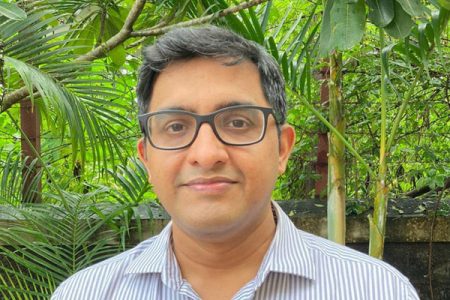Anil Nair, CEO, St. Jude India ChildCare Centres highlights the role of various stakeholders in childhood cancer management
When grappling with the adversities of childhood cancer treatment, the onus of a successful journey not only falls in the hands of the family but also requires a holistic approach from society at large. In a country where paediatric cancer accounts for 0.7-4.4 per cent of total cancer diagnoses, even the smallest contribution from the community can transform the lives of cancer fighters. While awareness is the first step towards closing the existing gaps, building an ecosystem based on understanding the severity, prevention, detection, and treatment of cancer is the next goal.
Approximately 70-80 per cent of paediatric cancers are completely curable. However, only 20,000 of the 50,000 patients in India get access to quality treatment as there are multiple barriers such as finances, social stigma, early detection, access to quality treatment etc. obstructing access to quality healthcare. We can create an environment with greater access to cancer treatment by understanding the barriers and how various stakeholders, such as the government, NGOs, relatives, donors, etc., can tackle them. Every stakeholder plays a crucial role in this journey of survival:
Role of government
Our healthcare system is growing and developing with each passing year, and the government is doing its due diligence in helping people fight cancer. The government runs multiple schemes that create provisions for financial assistance up to Rs 1.5 Lakhs for cancer treatment of patients below the poverty line. Over the years, we have also witnessed the emergence of the National Cancer Grid and tertiary cancer centres in smaller towns, which have enhanced access to doctors and quality treatment. Additionally, the Government of India also runs a Health Minister’s Cancer Patient Fund (HMCPF) to provide financial aid to marginalised and underprivileged patients who have cancer. A corpus fund of Rs.100 crore has also been set up along with additional provisions of the Chief Minister’s Relief Fund, under which the states can extend financial help for cancer treatment. Furthermore, the Prime Minister’s National Relief Fund also provides up to Rs 3,00,000 to treat life-threatening diseases, including cancer.
Role of technology
From using artificial intelligence for improved cancer diagnosis, drug development, and precision medicine to harnessing the power of robotics to perform precise, minimally invasive surgeries to remove cancer, technology has revolutionised how doctors and patients can approach treatment. Treatments guided by advanced technology such as Image Guided Radiation Therapy, 3-D map creation of a tumour and the surrounding tissues, high-energy x-rays in the shape of a patient’s tumour, etc., are helping patients live longer, fuller, and healthier lives. Developments in new technology have provided highly effective and personalised treatment.
Role of friends/families and relatives
During such times of adversity, an innocent child undergoes turmoil with mixed emotions and fear of the unknown. The first step for their loved ones is to create a positive environment for the child to help him build the strength and morale to fight such a disease. Another significant role that families can undertake is to spread awareness about cancer, its non-communicable nature and its treatments to help destigmatise the illness in society. These efforts will empower the child and create a caring environment amongst their peers in difficult times.
Role of non-profit organisations
Non-profit organisations that support cancer patients and families play a dynamic role in bridging accessibility gaps and providing critical aid for treatment and survival. Through financial assistance, nutritional provisions, awareness, etc., these centres give the children hope of fighting and surviving cancer. Various NGOs across the nation provide free/low-cost treatment, holistic nutrition, free housing and transportation to hospitals and counselling to underprivileged children fighting cancer and their families. NGOs act as the prime voice for raising awareness, encouraging early detection, eradicating the stigma associated with cancer, and helping people understand that cancer is preventable and curable. Apart from providing support for treatment, many non-profit organisations also help with guidance and counselling, rehabilitation, research studies and advocacy.
Role of donor, doctors and hospitals
When it comes to advanced and affordable paediatric cancer treatment, hospitals need to extend individualised care for the child. A cohesive collaboration with the diagnosis and design team to meet the child’s unique needs in a safe and family-focused environment should be the top priority for hospitals and doctors. Moreover, while there are awareness streams for blood donation for cancer treatments, there is a need to create a higher awareness about donating platelets, bone marrow, and umbilical cord blood. It takes just one person to step up and donate to save the lives of many children fighting cancer.
It is increasingly evident that there isn’t a single cure for paediatric cancer, but together as a society, these initiatives can help bridge the existing care gaps in our system and aid in the successful journeys for children and their families.

